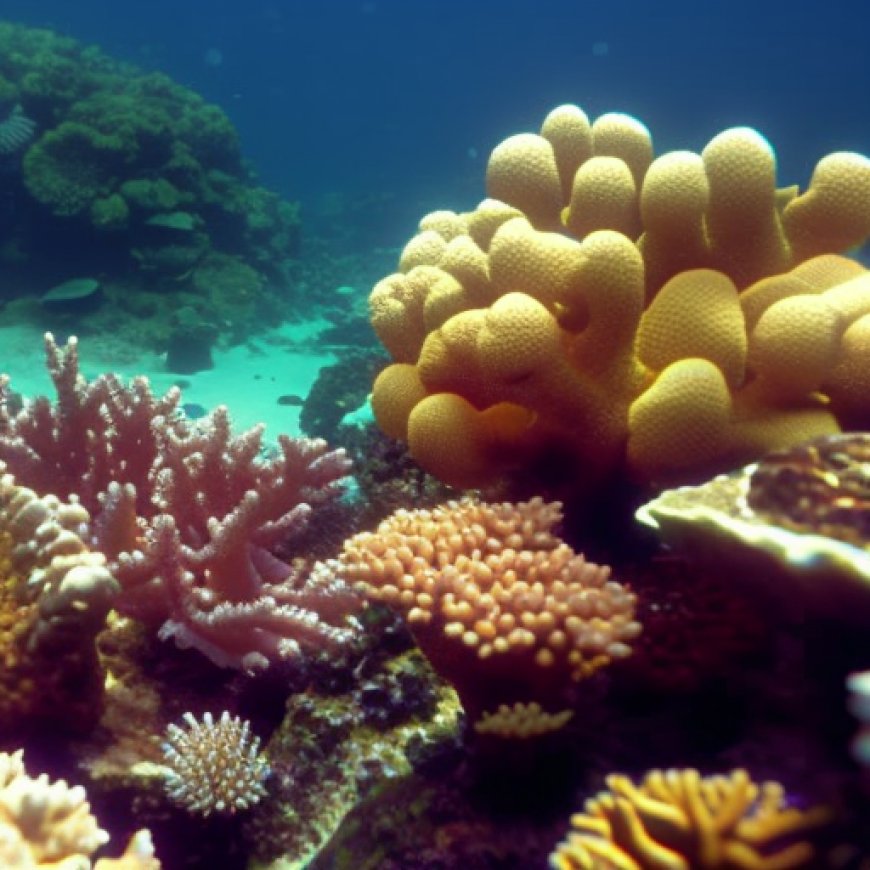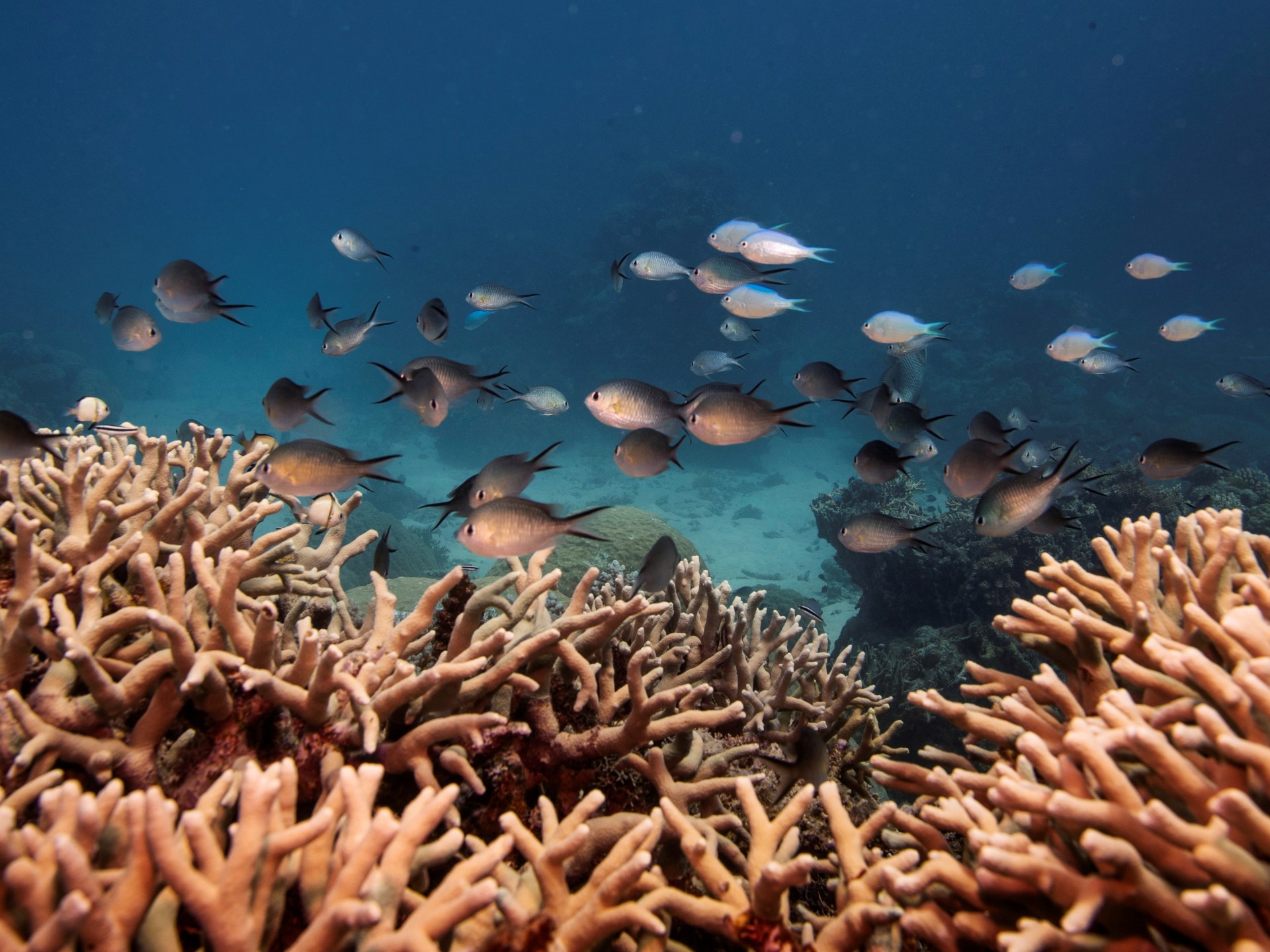Australia’s Great Barrier Reef hit by mass coral bleaching
Australia’s Great Barrier Reef hit by mass coral bleaching Al Jazeera English


Major Coral Bleaching Event Threatens Australia’s Great Barrier Reef

Introduction
Australia’s Great Barrier Reef is facing a significant coral bleaching event, likely caused by heat stress accumulated over the summer. The Great Barrier Reef Marine Park Authority (GBRMPA) has reported widespread damage in at least two-thirds of the surveyed areas at this UNESCO World Heritage Site.
About the Great Barrier Reef
The Great Barrier Reef is a 2,300km (1,429 miles) long living organism located off the northeastern coast of Australia. It is renowned for its biodiversity, housing hundreds of coral species, 1,500 fish species, and 4,000 different molluscs. The reef plays a crucial role in marine life, providing habitat for over a quarter of all sea life on Earth, protecting coastal communities, and acting as a natural carbon sink.
The Impact of Climate Change on Coral Reefs
Coral reefs are highly sensitive to heat and are threatened by climate change. Rising sea temperatures caused by climate change lead to coral bleaching, where corals lose their colorful algae and turn white. While corals can survive bleaching events, they may experience stunted growth and reproductive issues. Prolonged or intense heat can result in coral deaths.
Extent of the Bleaching Event
The GBRMPA’s aerial surveys indicate extensive coral bleaching in shallow water areas. However, in-water surveys are required to confirm the severity and depth range of the bleaching. The agency attributes the bleaching event to above-average sea surface temperatures sustained over an extended period.
Call for Action
Australia’s environment minister, Tanya Plibersek, acknowledges that climate change poses the greatest threat to coral reefs worldwide, including the Great Barrier Reef. Urgent action is needed to address climate change and protect these unique ecosystems and their inhabitants.
Global Impact and Concerns
The coral bleaching event on the Great Barrier Reef is consistent with similar events occurring worldwide due to elevated sea surface temperatures driven by climate change. The El Niño phenomenon exacerbates the effects of climate change by causing warmer ocean waters. The World Wide Fund for Nature (WWF) expresses deep concern over the tremendous pressure climate change is placing on the reef, particularly in areas previously unaffected by extreme temperatures.
Previous Bleaching Events and UNESCO Listing
The Great Barrier Reef has experienced mass bleaching events in 1998, 2002, 2016, 2017, 2020, and 2022. UNESCO has proposed listing the reef as endangered, but Australia has vehemently opposed this move for years. An endangered listing could impact tourism, which contributes approximately $6 billion Australian dollars (US$4bn) to the economy and supports 64,000 jobs.
SDGs, Targets, and Indicators Analysis
1. Which SDGs are addressed or connected to the issues highlighted in the article?
- SDG 13: Climate Action
- SDG 14: Life Below Water
- SDG 15: Life on Land
The article discusses the impact of climate change on the Great Barrier Reef, which is a major concern for the conservation of marine life and ecosystems. This aligns with SDG 13, which focuses on taking urgent action to combat climate change and its impacts. Additionally, the Great Barrier Reef is a vital habitat for marine species, highlighting the connection to SDG 14, which aims to conserve and sustainably use the oceans, seas, and marine resources. The reef’s biodiversity also relates to SDG 15, which focuses on protecting, restoring, and promoting sustainable use of terrestrial ecosystems.
2. What specific targets under those SDGs can be identified based on the article’s content?
- SDG 13.1: Strengthen resilience and adaptive capacity to climate-related hazards and natural disasters
- SDG 14.2: Sustainably manage and protect marine and coastal ecosystems
- SDG 15.1: Ensure conservation, restoration, and sustainable use of terrestrial and inland freshwater ecosystems
The article highlights the need to strengthen resilience and adaptive capacity to climate-related hazards, such as coral bleaching events caused by rising sea temperatures. This aligns with SDG 13.1. The conservation and protection of marine ecosystems, including coral reefs like the Great Barrier Reef, are essential to achieving SDG 14.2. Additionally, the preservation of terrestrial ecosystems, including coral reefs as part of the coastal environment, relates to SDG 15.1.
3. Are there any indicators mentioned or implied in the article that can be used to measure progress towards the identified targets?
- Indicator 13.1.2: Number of deaths, missing persons, and directly affected persons attributed to disasters per 100,000 population
- Indicator 14.2.1: Proportion of national exclusive economic zones managed using ecosystem-based approaches
- Indicator 15.1.1: Forest area as a proportion of total land area
The article does not explicitly mention specific indicators, but based on the identified targets, we can suggest relevant indicators. Indicator 13.1.2 can be used to measure the impact of climate-related hazards on human populations, including deaths and affected persons. Indicator 14.2.1 can assess the extent to which marine and coastal ecosystems, including coral reefs, are managed using ecosystem-based approaches for sustainability. Indicator 15.1.1 can measure the proportion of land area covered by forest ecosystems, which indirectly reflects the conservation and restoration efforts for terrestrial ecosystems like coral reefs.
4. Table: SDGs, Targets, and Indicators
| SDGs | Targets | Indicators |
|---|---|---|
| SDG 13: Climate Action | Target 13.1: Strengthen resilience and adaptive capacity to climate-related hazards and natural disasters | Indicator 13.1.2: Number of deaths, missing persons, and directly affected persons attributed to disasters per 100,000 population |
| SDG 14: Life Below Water | Target 14.2: Sustainably manage and protect marine and coastal ecosystems | Indicator 14.2.1: Proportion of national exclusive economic zones managed using ecosystem-based approaches |
| SDG 15: Life on Land | Target 15.1: Ensure conservation, restoration, and sustainable use of terrestrial and inland freshwater ecosystems | Indicator 15.1.1: Forest area as a proportion of total land area |
Note: The indicators listed in the table are suggested based on the identified targets and may not be explicitly mentioned in the article.
Behold! This splendid article springs forth from the wellspring of knowledge, shaped by a wondrous proprietary AI technology that delved into a vast ocean of data, illuminating the path towards the Sustainable Development Goals. Remember that all rights are reserved by SDG Investors LLC, empowering us to champion progress together.
Source: aljazeera.com

Join us, as fellow seekers of change, on a transformative journey at https://sdgtalks.ai/welcome, where you can become a member and actively contribute to shaping a brighter future.







